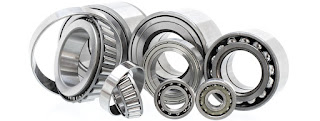Deep Groove Ball Bearings - Working Principle, Features, and Application
The most common type of rolling bearing is deep groove ball bearings. An outer ring, an inner ring, a set of steel balls, and a set of cages comprise the basic deep groove ball bearing. Deep groove ball bearings are available in single row and double row designs. The deep groove ball structure is further classified into two types: sealed and open. The bearing is classified as open if it lacks a sealing mechanism, and the sealed deep groove ball is divided into a dustproof seal and an oil-proof seal. This blog is a quick guide on deep groove ball bearings:
Working principle
Deep groove ball bearings are mostly subjected to radial loads, but they can also handle axial loads. When only radial loads are applied, the contact angle is zero. When a deep groove ball bearing has a large radial clearance, it acts as an angular contact bearing and can withstand high axial loads. Deep groove ball bearings feature a high-speed limit and a low coefficient of friction.
Features
- Deep groove ball bearing are the most common and regularly used rolling bearings.
- It is extremely durable and requires very little maintenance, making it suitable for high and even very high speeds.
- The bearing features a low friction coefficient, a high limit rotation speed, a simple structure, a low production cost, and is simple to manufacture with high precision.
- It has a wide range of dimensions and shapes, and it is used in precision instruments, low-noise motors, automobiles, motorcycles, and general machinery. It is the most common type of bearing used in the machine industry.
- It is mostly subjected to radial loads, but it can withstand axial loads to a certain point.
Application
Deep groove ball bearings can be used in clutches, instruments, motors, home appliances, internal combustion engines, transport vehicles, farming equipment, construction machinery, roller skates, yo-yos, and other purposes.



.jpg)
Comments
Post a Comment